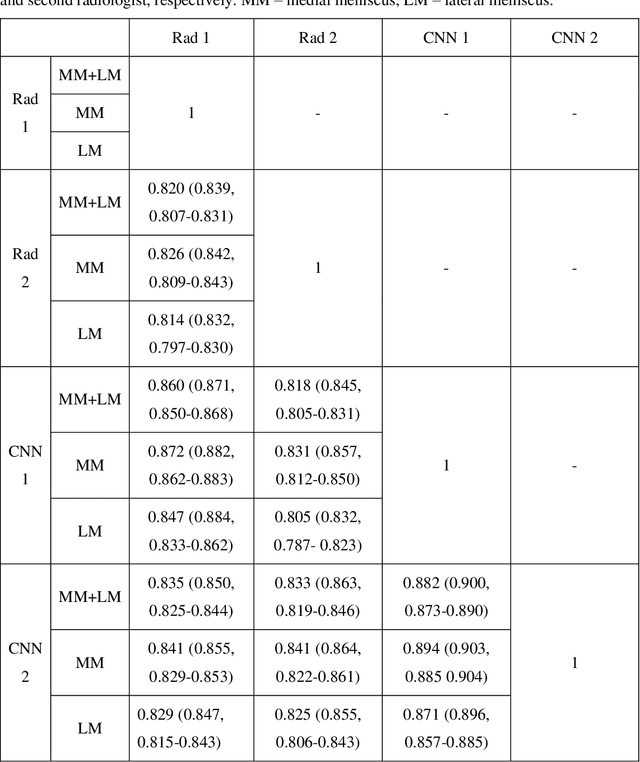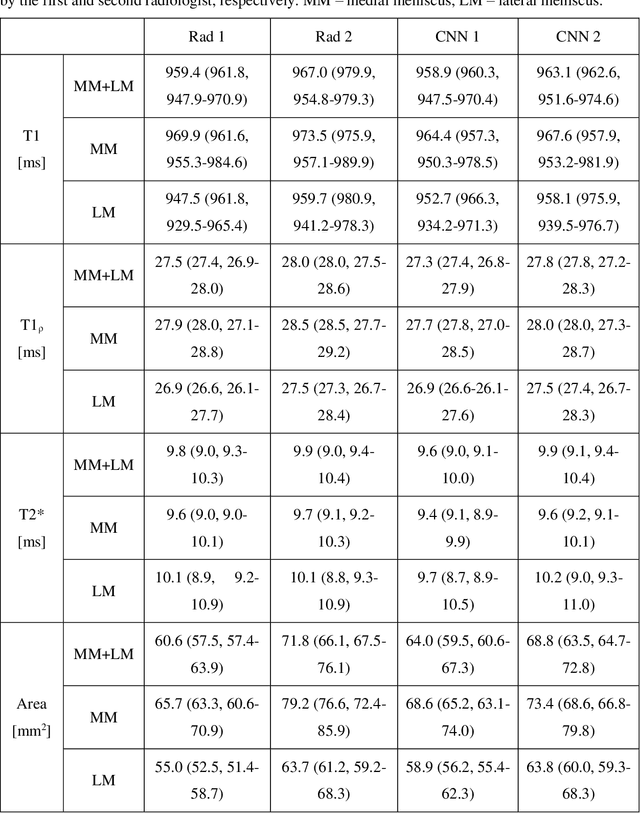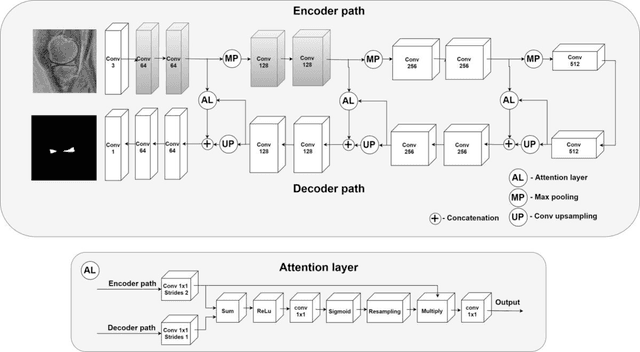Knee menisci segmentation and relaxometry of 3D ultrashort echo time (UTE) cones MR imaging using attention U-Net with transfer learning
Paper and Code
Aug 05, 2019



The purpose of this work is to develop a deep learning-based method for knee menisci segmentation in 3D ultrashort echo time (UTE) cones magnetic resonance (MR) imaging, and to automatically determine MR relaxation times, namely the T1, T1$\rho$, and T2* parameters, which can be used to assess knee osteoarthritis (OA). Whole knee joint imaging was performed using 3D UTE cones sequences to collect data from 61 human subjects. Regions of interest (ROIs) were outlined by two experienced radiologists based on subtracted T1$\rho$-weighted MR images. Transfer learning was applied to develop 2D attention U-Net convolutional neural networks for the menisci segmentation based on each radiologist's ROIs separately. Dice scores were calculated to assess segmentation performance. Next, the T1, T1$\rho$, T2* relaxations, and ROI areas were determined for the manual and automatic segmentations, then compared.The models developed using ROIs provided by two radiologists achieved high Dice scores of 0.860 and 0.833, while the radiologists' manual segmentations achieved a Dice score of 0.820. Linear correlation coefficients for the T1, T1$\rho$, and T2* relaxations calculated using the automatic and manual segmentations ranged between 0.90 and 0.97, and there were no associated differences between the estimated average meniscal relaxation parameters. The deep learning models achieved segmentation performance equivalent to the inter-observer variability of two radiologists. The proposed deep learning-based approach can be used to efficiently generate automatic segmentations and determine meniscal relaxations times. The method has the potential to help radiologists with the assessment of meniscal diseases, such as OA.
 Add to Chrome
Add to Chrome Add to Firefox
Add to Firefox Add to Edge
Add to Edge